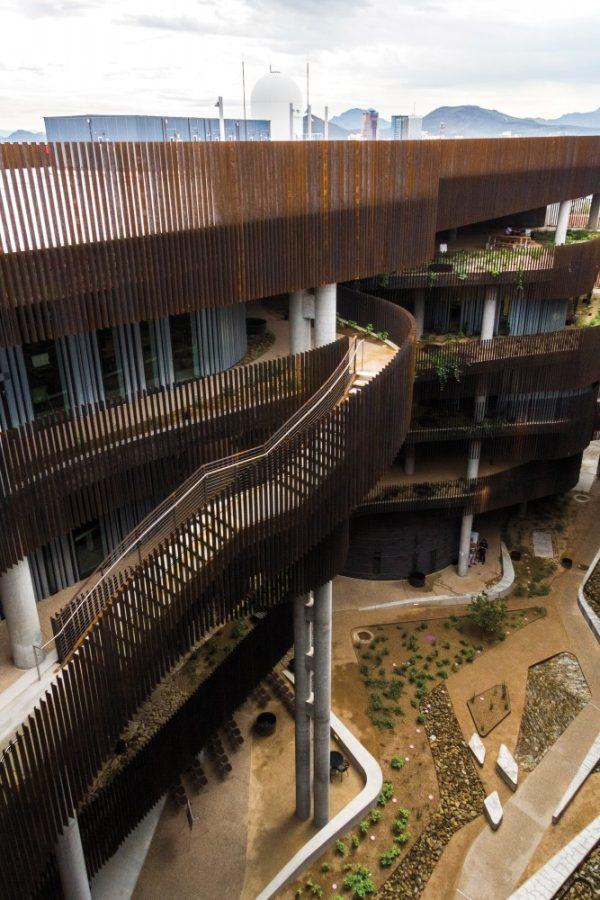The UA continues to raise the bar for in-state schools and universities around the nation with its sustainable design and construction throughout campus.
“I think the university takes a lot of pride in our sustainable practices and leading the way in many different ways,” said Christopher Kopach, the assistant vice president of Facilities Management.
According to Kopach, it could be said that every building on campus has some measure of sustainability in it; however, only five buildings are Leadership in Energy and Environmental Design certified at the UA, with five pending LEED certifications.
LEED Platinum is the highest ranking on the U.S. Green Building Council’s metric, applying to buildings that have received 80 points or more, followed by LEED Gold with 60-79 points and LEED Silver close after with 50-59 points. Regular LEED certified buildings are those with 40-49 points.
The Arizona Biomedical Collaborative building, located on the Phoenix Biomedical Campus, is the only LEED Gold-certified building and Old Main post-renovation is the only LEED Silver certified building.
The five pending to be certified are the Environment and Natural Resources Phase 2 building, the Bryant Bannister Tree Ring building, the Lowell-Stevens Football Facility, the UA Cancer Center at the Phoenix Biomedical Campus and the Health Sciences Education building, also located in Phoenix.
The UA has an impressive three LEED Platinum-certified buildings, the most of any higher education institution in the state.
The first building on campus to reach LEED Platinum was the Student Recreation Center, which was the first LEED Platinum recreation center in the country. The next two are residence halls: Likins Residence Hall and Árbol de la Vida Residence Hall.
According to Ben Champion, the director of the Office of Sustainability, the two residence halls received most of their points from the improved air quality by building and installing energy systems that are efficient for the amount of air they use.
“You have to bring in a lot more outdoor air to have high indoor air quality,” Champion said. “If you don’t have lots of outdoor air, then you end up having more indoor air quality issues because you’re recirculating air flow.”
The new ENR2 building is on its way to being UA’s fourth LEED Platinum building. It was designed as a slot canyon and doesn’t pump air but rather uses radiant cooling: a system of chilled water circulation that reduces air-conditioning expenditure by 30 percent.
Another great feature is how the building handles storm water.
“All the rain that lands on the rooftop ends up cascading through these openings from each floor, which has its own opening in the ceiling that allow the water to navigate down on the landscaping of the next floor,” Champion said. “So when it rains, it’s like this massive set of waterfalls, so it’s like you’d almost be standing in a slot canyon.”
With a growing number of LEED-certified buildings on campus, the UA shows it continues to promote strategies that are beneficial to the environment, as well as students and faculty.
“So whether it’s our ground, our custodial department, our maintenance shop, our utility department—everything we do, we say, ‘How can we make sure we are being as sustainable as possible? What’s good for the buildings?’ ” Kopach said.
Follow Elisabeth Morales on Twitter.









